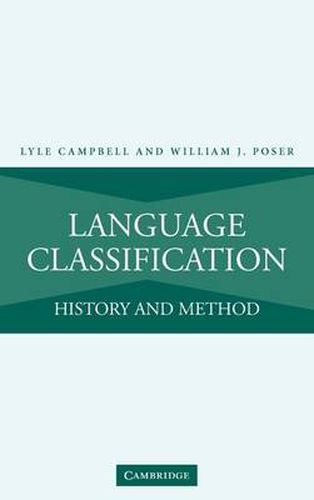Readings Newsletter
Become a Readings Member to make your shopping experience even easier.
Sign in or sign up for free!
You’re not far away from qualifying for FREE standard shipping within Australia
You’ve qualified for FREE standard shipping within Australia
The cart is loading…






How are relationships established between the world’s languages? This is one of the most topical and most controversial questions in contemporary linguistics. The central aims of this book are to answer this question, to cut through the controversies, and to contribute to research in distant genetic relationships. In doing this the authors aim to: (1) show how the methods have been employed; (2) reveal which methods, techniques, and strategies have proven successful and which ones have proven ineffective; (3) determine how particular language families were established; (4) evaluate several of the most prominent and more controversial proposals of distant genetic relationship (such as Amerind, Nostratic, Eurasiatic, Proto-World, and others); and (5) make recommendations for practice in future research. This book will contribute significantly to understanding language classification in general.
$9.00 standard shipping within Australia
FREE standard shipping within Australia for orders over $100.00
Express & International shipping calculated at checkout
How are relationships established between the world’s languages? This is one of the most topical and most controversial questions in contemporary linguistics. The central aims of this book are to answer this question, to cut through the controversies, and to contribute to research in distant genetic relationships. In doing this the authors aim to: (1) show how the methods have been employed; (2) reveal which methods, techniques, and strategies have proven successful and which ones have proven ineffective; (3) determine how particular language families were established; (4) evaluate several of the most prominent and more controversial proposals of distant genetic relationship (such as Amerind, Nostratic, Eurasiatic, Proto-World, and others); and (5) make recommendations for practice in future research. This book will contribute significantly to understanding language classification in general.